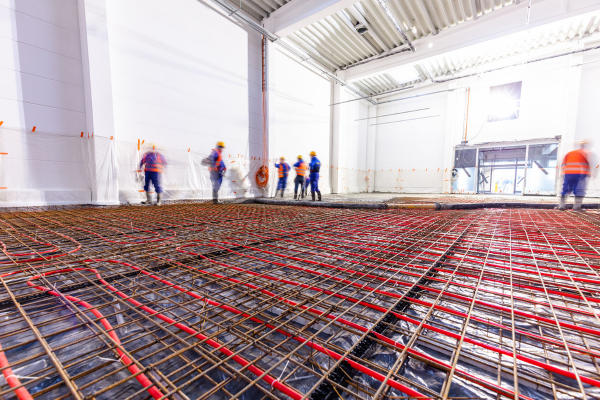
There’s a lot to consider when building or upgrading a pole barn, especially here in the Midwest. One of the most important decisions is how to heat the space effectively. Midwest winters can be long and harsh, so choosing the right heating solution is essential—whether you're designing a stable or barn for agricultural use, considering a new build versus a renovation, or creating a garage, hobby shop, or custom home.
Pole barns, also known as post-frame buildings, are incredibly versatile. But how you heat yours depends on how it’s constructed, how you use it, and how much you prioritize energy efficiency.
Wood or Pellet Stove
For budget-conscious heating, a wood-burning stove is a solid option. These systems work by drawing in air from the room, heating it in the stove, and exhausting smoke through a vent. Some models can even distribute heated air throughout the barn using heat-exchange tubes.
This method is ideal for pole barns that aren’t in constant use, such as a part-time man cave, she shed, or workshop.
If you want cleaner emissions and better temperature control, consider a pellet stove. While slightly more expensive than wood stoves, pellet stoves burn cleaner and are often easier to regulate. Pellet stoves offer cleaner emissions and better temperature control than wood stoves, though they are typically more expensive. Be sure any stove installation meets current EPA emissions standards.
Furnace
A forced-air furnace—powered by electricity, propane, or natural gas—is a dependable option for pole barns that need to be heated regularly. This is especially useful for custom homes or hobby shops where consistent indoor temperatures are important.
Furnaces work by warming air through a heat exchanger and distributing it through ductwork and vents. They're effective, quick to heat, and can be adapted for various building sizes.
Heat Pump
If you’re looking for energy efficiency and year-round comfort, a heat pump may be the right fit. It uses electricity to transfer heat from the outside into your building during the winter, and reverses the process in the summer for cooling.
Heat pumps are best for buildings that need full-season climate control. However, air-source heat pumps may struggle during extreme cold snaps. While modern cold-climate heat pumps perform better than older models, they may need a backup system when temperatures dip below –10°F.
In-floor Heating
One of the most comfortable and efficient options for heating a post frame building is in-floor radiant heating. It provides even heat distribution across the entire space, reducing cold spots and lowering energy costs over time.
There are two primary systems to choose from:
Electric In-Floor Heating
Electric systems are relatively easy to install, especially during renovations. They’re ideal for smaller spaces or buildings that need heating only in select areas. These systems require minimal maintenance and offer consistent performance.
Hydronic In-Floor Heating
Hydronic systems use heated water pumped through tubing beneath the floor. These are best suited for larger pole barns or buildings with multiple zones, as the operating cost per square foot typically decreases with size. They're most efficient when installed during new construction.
Choosing the Right Heating System
The right heating solution for your pole barn depends on your structure’s design, size, and usage. For instance, in a commercial post-frame building, hydronic floor heat may be ideal, while a pellet stove might be perfect for a smaller, personal-use hobby building.
If you're in the planning or design phase, working with a builder that understands both your heating needs and post-frame construction is key.
Ready to Plan Your Heating System?
Don’t wait until winter hits to start thinking about heating your building. Whether you're building new or upgrading an existing structure, Pro-Line Building Company can help you evaluate your options and choose a solution that makes sense for your space, budget, and goals.
Contact us today to talk with one of our building specialists.
.svg)